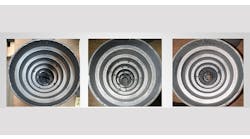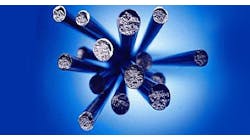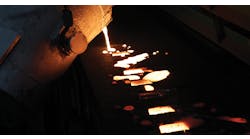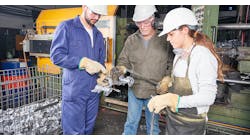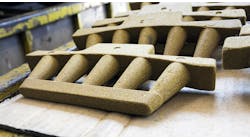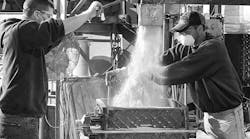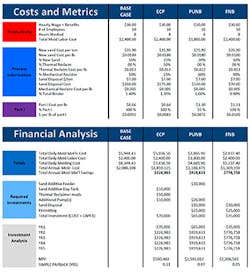Latest from Ask the Expert
However, it would definitely be more prudent to tap into resources provided by one of your trusted suppliers. In this case it would be best to compare and contrast the attributes and costs of various no-bake molding platforms (ECPNB vs. PUNB vs. FNB) via the use of a well-developed economic model. Doing this will highlight for you the differences between these platforms and identify which cost “buckets” normally associated with casting production will be negatively or positively impacted. (See graph.)
Before diving too deeply into any economic analysis it is generally recommended that you review your facility’s operating permit. Doing so will identify any regulatory considerations that need to be factored into your analysis.
You also may want to consult your site manager to determine if there are community-nuisance issues and/or employee-related safety initiatives that need to be considered. Do not let anything that you uncover during this initial investigation deter you from your primary goal of cost reduction. Over the past 10 years many foundries have implemented economic improvements that also have had benefits with respect to various regulatory considerations.
As you begin to establish an economic baseline for your current operations be sure to identify the “buckets,” cost centers, and key performance indicators that drive your operations. For simplicity’s sake we would recommend that you break your process down into its fundamental drivers. Foundry economics are heavily impacted by the four primary elements of melting, mold/coremaking, sand reclamation, and cleaning / finishing. In this example we can simplify the analysis by eliminating melting as well as cleaning/finishing, because they have little impact on the two costs you have identified in your question.
Also, it should be pointed out that the no-bake molding technology platform that you select will definitely have an impact on the frequency of certain casting defects, and as such will impact cleaning / finishing costs. However, other process changes, such as using specific sand additives or refractory coatings, can help to eliminate these potential costs.
Within the remaining two elements (mold/coremaking and sand reclamation) you will want to capture costs and metrics associated with materials, manpower, energy, productivity, and potential capital investment. If these costs are not readily available, or would take excessive resources to determine, you can once again rely on your trusted suppliers.
Well-established and reputable suppliers should be able to provide “industry average” values for these costs based on experience and historical norms. Not surprisingly, most no-bake sand castings can be made by using any one of the more common technology platforms. Creative foundry operators have been accomplishing this feat for decades. What determines whether those castings can be made profitably are the details and costs associated with each of the sub-processes in use (moldmaking, coremaking, sand reclamation, etc.) Simply put, there is no substitute for using well-developed economic models to make sound business decisions in the foundry environment.
Join the Conversation. Email Your Questions for ASK Chemicals
Share your insights, opinions, and elaborate on the questions and the experts' answer(s). You must be logged in to the website in order to post your comments.

